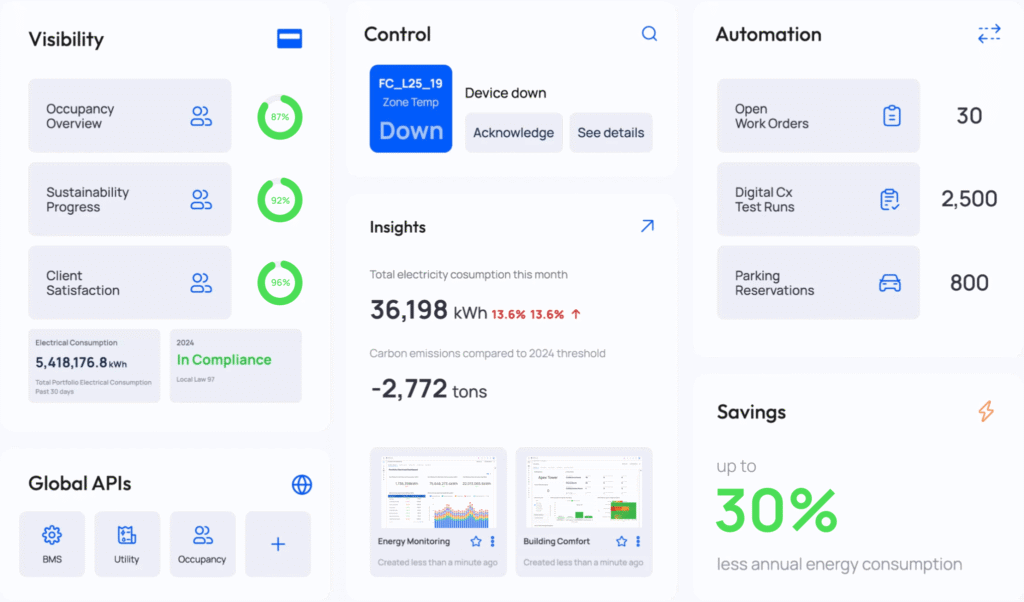By KODE Team
On this page
Sign up to our newsletter
Subscribe to receive the latest blog posts to your inbox every week.
By subscribing you agree to with our Privacy Policy.
Mission: Spot rogue system overrides before they inflate costs
In retail operations, overrides are often necessary. A technician adjusts a setpoint for maintenance, or a store manager tweaks comfort levels during a busy shift. But what happens when those overrides don’t get reset?
They stay in place — and keep equipment running when it shouldn’t be.
They quietly push systems out of schedule.
They drive up energy use, increase wear and tear, and undercut operational standards.
And most of the time, no one even knows it’s happening.
The Hidden Cost of Forgotten Overrides
Large retail organizations manage thousands of pieces of equipment across their portfolios. And each of those systems can be overridden in a number of ways:
- Local HOA (Hand-Off-Auto) switches
- In-store touchscreen displays
Centralized BMS graphics
The problem? Overrides can be easy to make… and easy to forget. Without real-time visibility, those temporary changes become permanent liabilities.
What this leads to:
- Systems left running in unoccupied modes
- Heating or cooling setpoints misaligned with operational hours
- Equipment cycling unnecessarily — sometimes for weeks
- A patchwork of overrides with no accountability or central tracking
Mission Accomplished: Real-Time Override Visibility with KODE OS
KODE OS transforms how overrides are tracked, understood, and resolved.
Instead of hunting them down manually, teams can view, investigate, and act — all in one place.
Here’s how the Override Exposure workflow works:
1. Surface Override Activity Across the Portfolio

KODE OS continuously collects real-time point data and control histories. Overrides are flagged and displayed across your portfolio, so teams can instantly see:
- How many devices are currently overridden
- What types of points are affected (e.g., unoccupied cooling/heating setpoints)
- Which sites are the biggest offenders
2. Investigate and Diagnose the Issue

With a few clicks, teams can drill into each override to understand:
- What value was set
- When the override occurred
- Which user applied it
- How often similar overrides are happening across equipment types or locations
Patterns can quickly emerge, such as stores regularly overriding heating setpoints during unoccupied hours, or repeated use of a specific temperature value across dozens of locations.
3. Identify the Source

KODE OS allows facilities teams to trace overrides back to the source. Was it:
- A store manager responding to a comfort complaint?
- A technician troubleshooting an issue?
- A system-level change pushed through the BMS?
Armed with user-level command history, teams can address root causes and adjust protocols, not just fix symptoms.
4. Act with Confidence
Once identified, overrides can be triaged directly from within the platform. Whether it’s pushing a reset command, creating a work order, or flagging the issue for follow-up, KODE OS gives operations teams the tools to resolve overrides proactively, before they impact energy use or comfort.
What This Looks Like in Practice
Across large retail portfolios, it’s common for KODE OS to surface hundreds or even thousands of active overrides — many of which impact unoccupied heating and cooling setpoints.
When organizations investigate further, they often find:
- Overrides are frequently set to the same temperature values across multiple sites.
- Many remain active for weeks or months, causing systems to operate outside of schedule.
- Some have no associated ticket or reasoning, indicating forgotten changes that quietly drive up energy costs.
With KODE OS, teams can quickly:
- Reset overrides in bulk
- Identify patterns in override behavior across the portfolio
- Coach staff on proper override procedures based on real usage data
The result? Fewer inefficiencies, lower operating costs, and tighter, more consistent control over system performance.
How KODE OS Transforms Override Management
Here’s what override handling typically looks like and how it improves with KODE OS:

Turning Insight Into Impact
Overrides are often temporary… until they’re not. What starts as a quick fix can quietly become a drain on operations. When they’re spread across thousands of sites and systems, even small oversights can lead to outsized costs.
With KODE OS, override exposure is no longer a mystery:
- Facilities teams can track, filter, and respond to overrides in real time
- Operational consistency improves
- Equipment runs on schedule (not on guesswork)
- Energy performance aligns with intent
Your Mission
If forgotten overrides continue to haunt your portfolio, it’s time to shine a light on them.
KODE OS gives you the visibility, accountability, and control to manage overrides before they become inefficiencies. Your mission, should you choose to accept it: Gain complete visibility into overrides and take back control with the data, context, and tools to resolve them effortlessly. Explore KODE OS →
Want to stop getting surprised by forgotten overrides? Book a demo with our team and see how KODE OS tracks override activity across every store, so your team can take action, not chase issues.




